Printable Samples and Surveys Worksheets
Identifying Problems in Statistical Questions (A)
Grades: 6th Grade
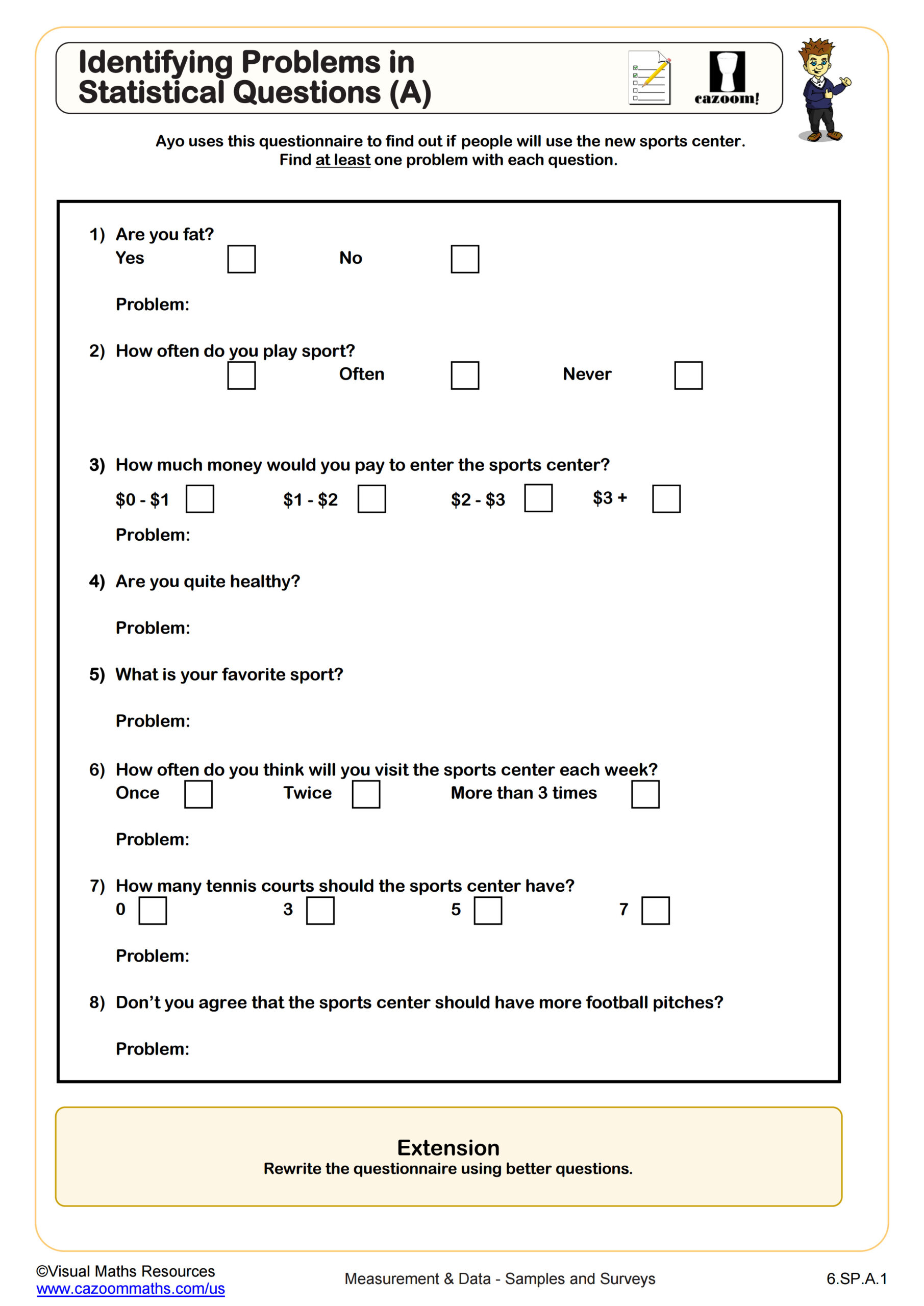
Identifying Problems in Statistical Questions (A) (With Clues)
Grades: 6th Grade
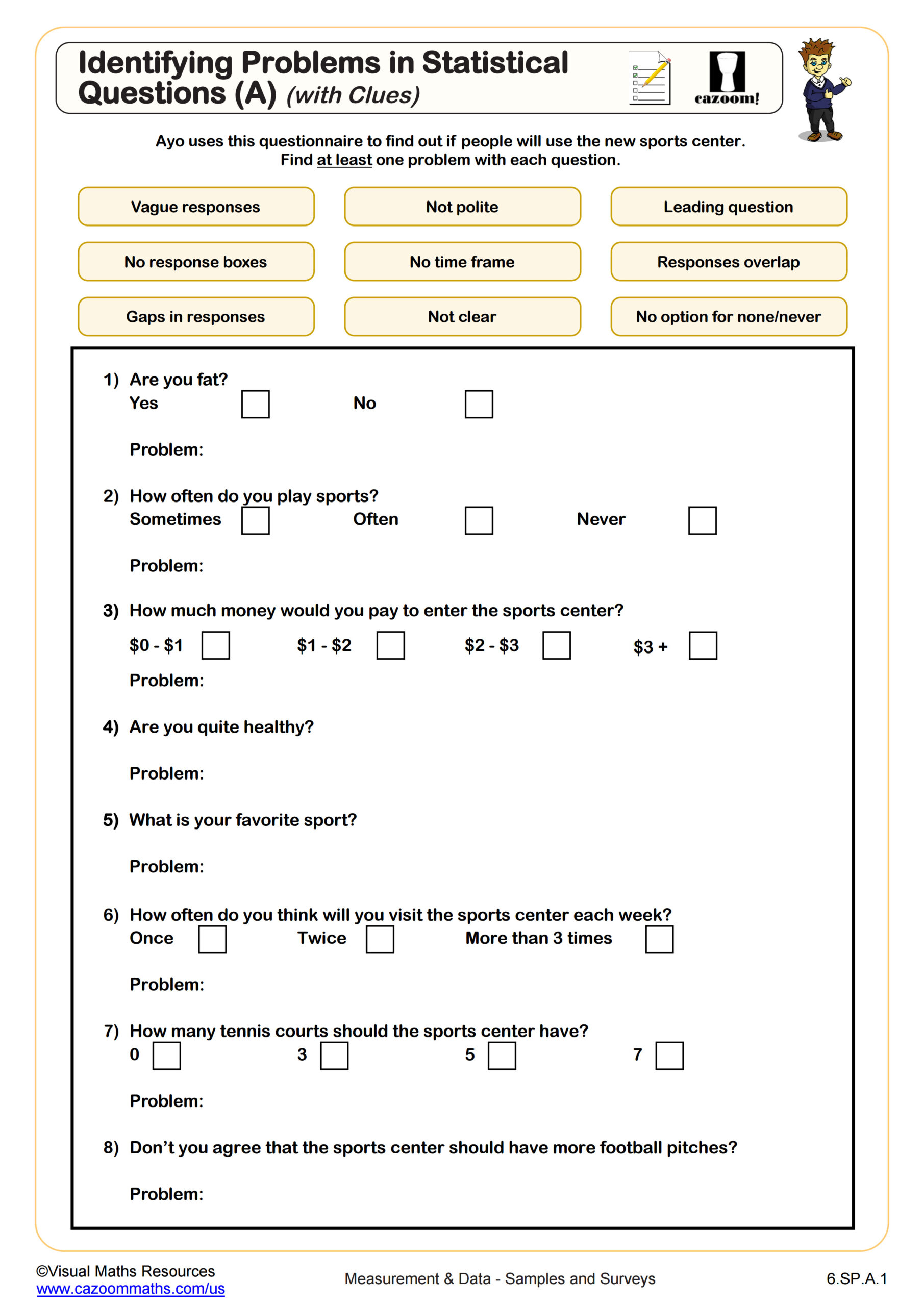
Identifying Problems in Statistical Questions (B)
Grades: 6th Grade
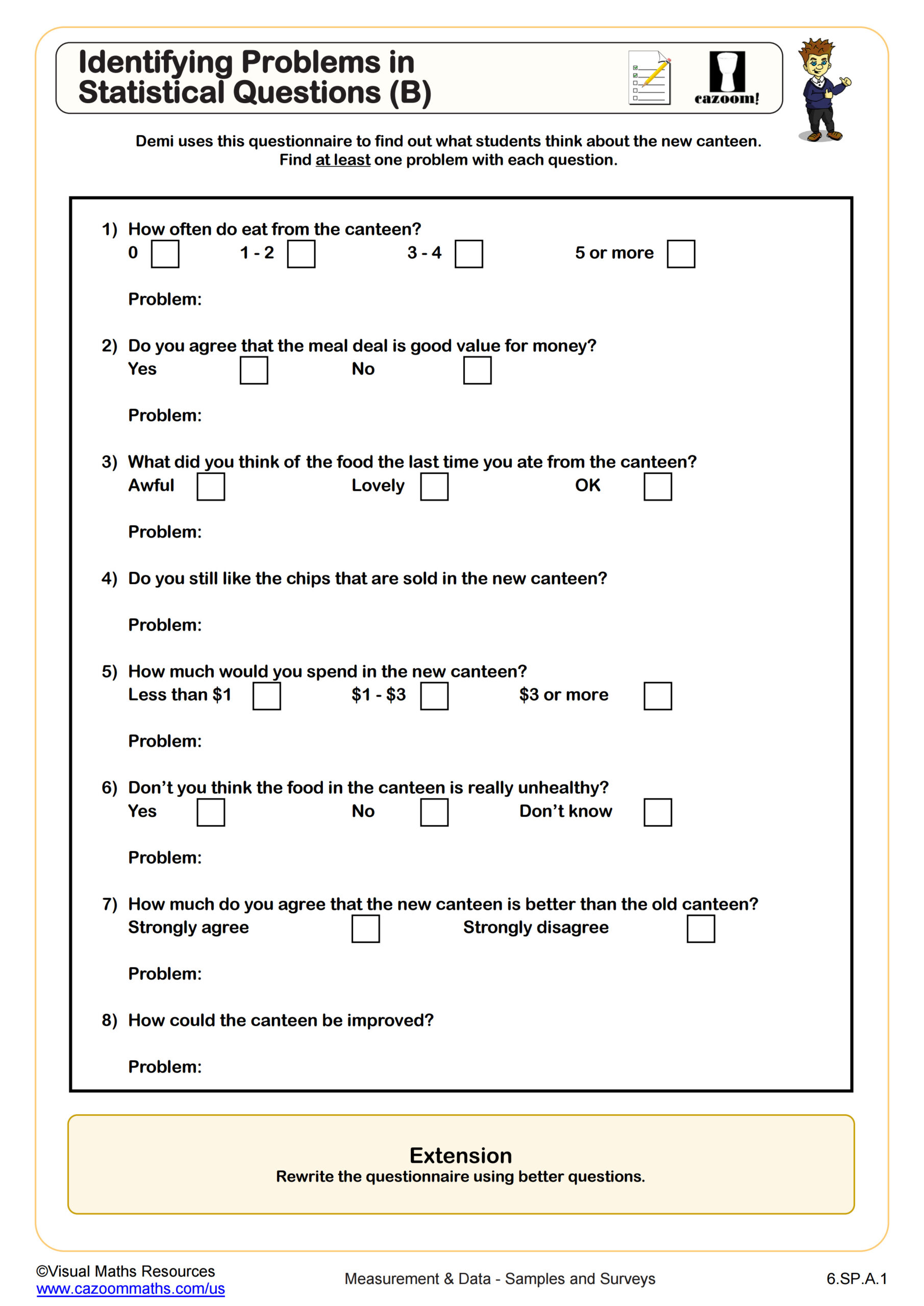
Writing Statistical Questions
Grades: 6th Grade
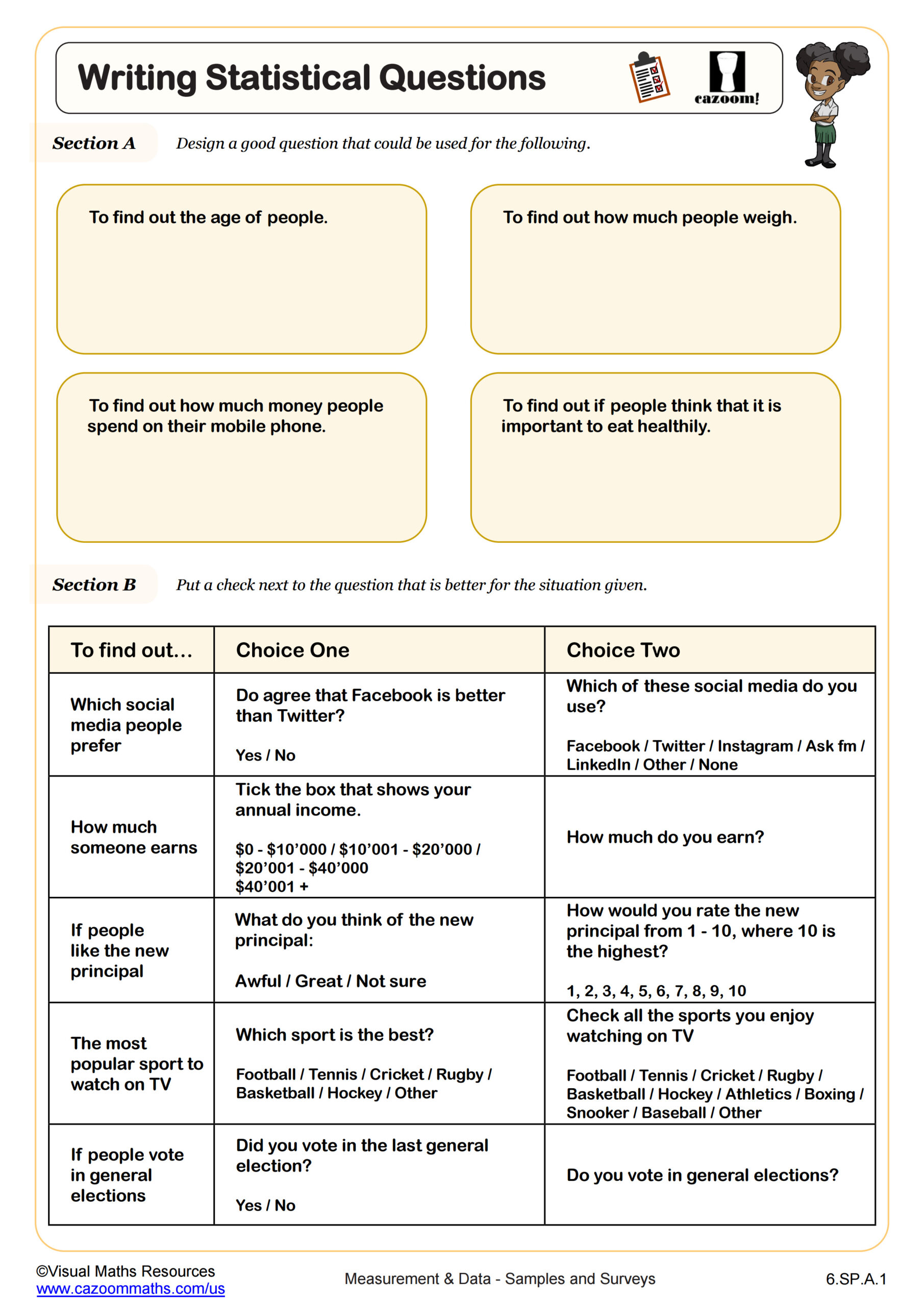
Probability Calculations
Grades: 7th Grade
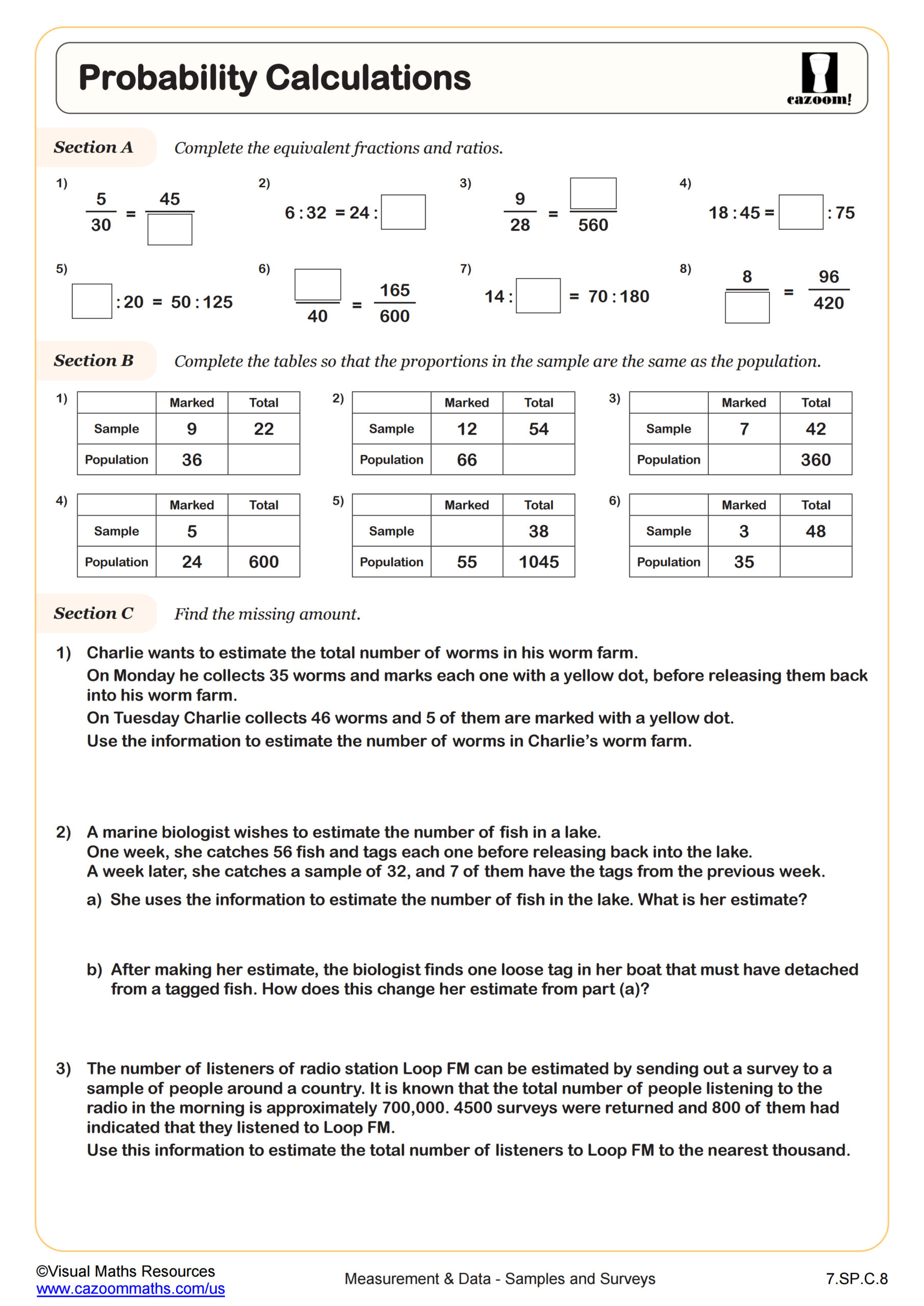
Question Bias
Grades: 7th Grade, Geometry
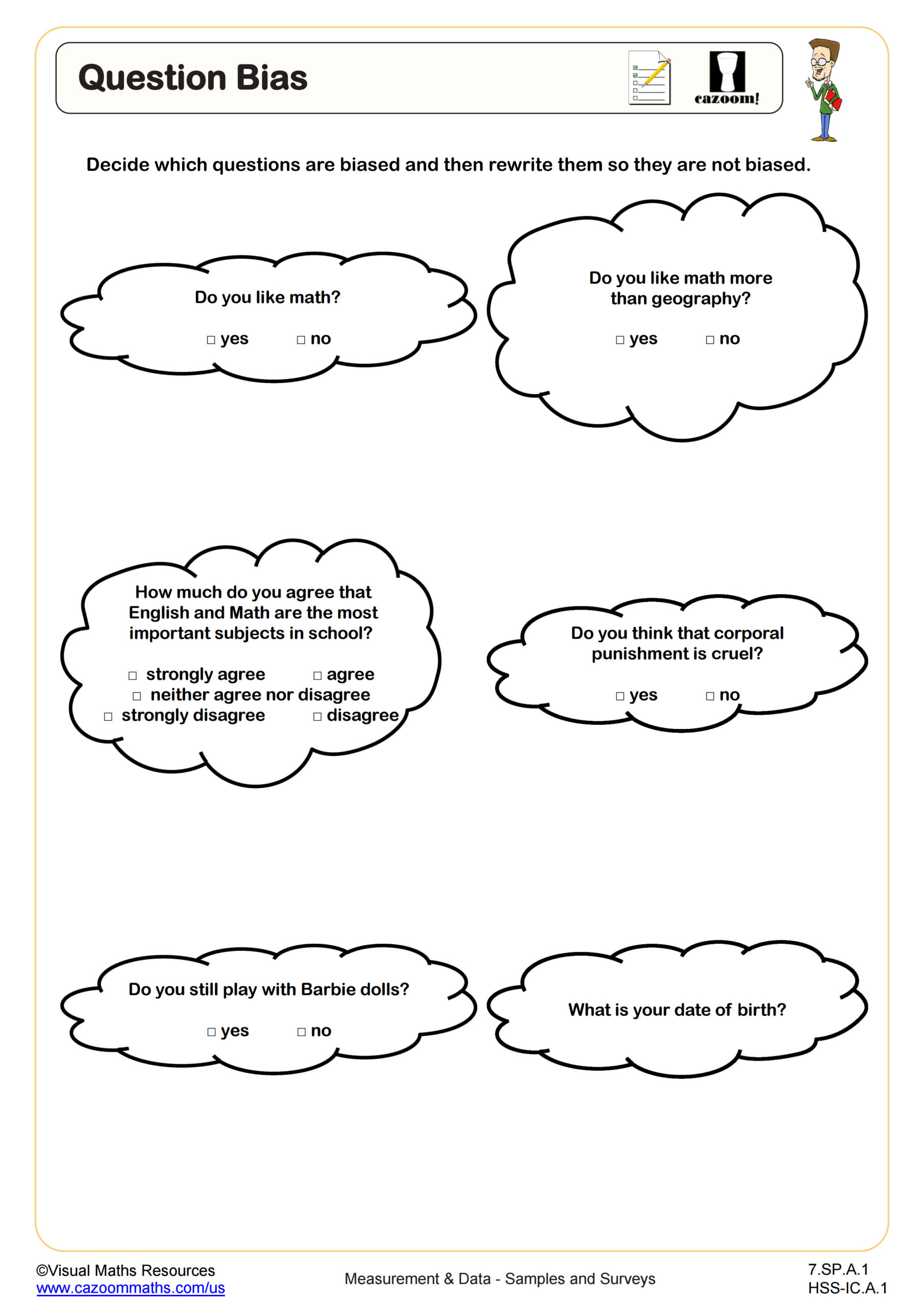
Sample Bias
Grades: 7th Grade, Geometry
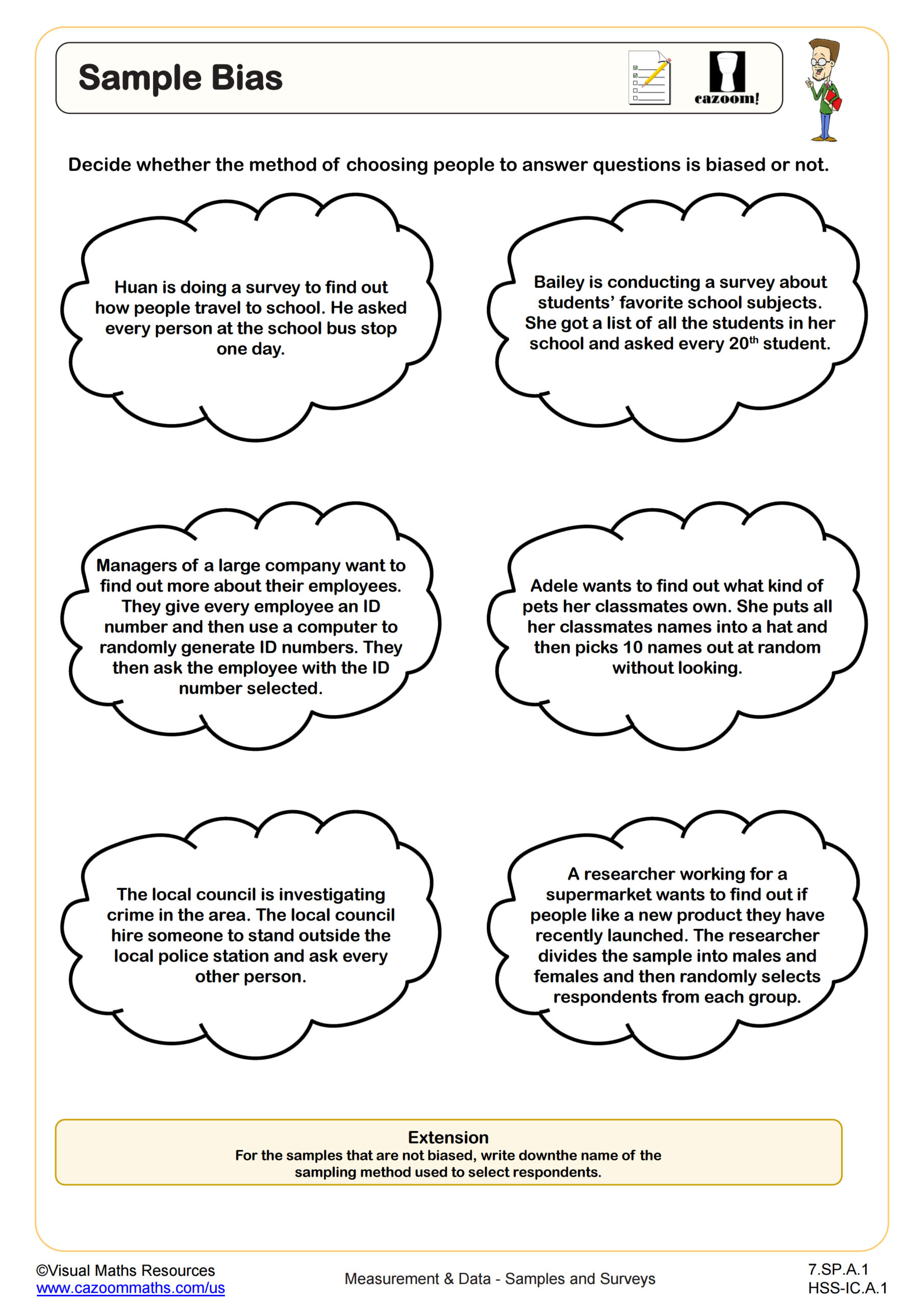
Stratified Sampling (A)
Grades: 7th Grade, Geometry
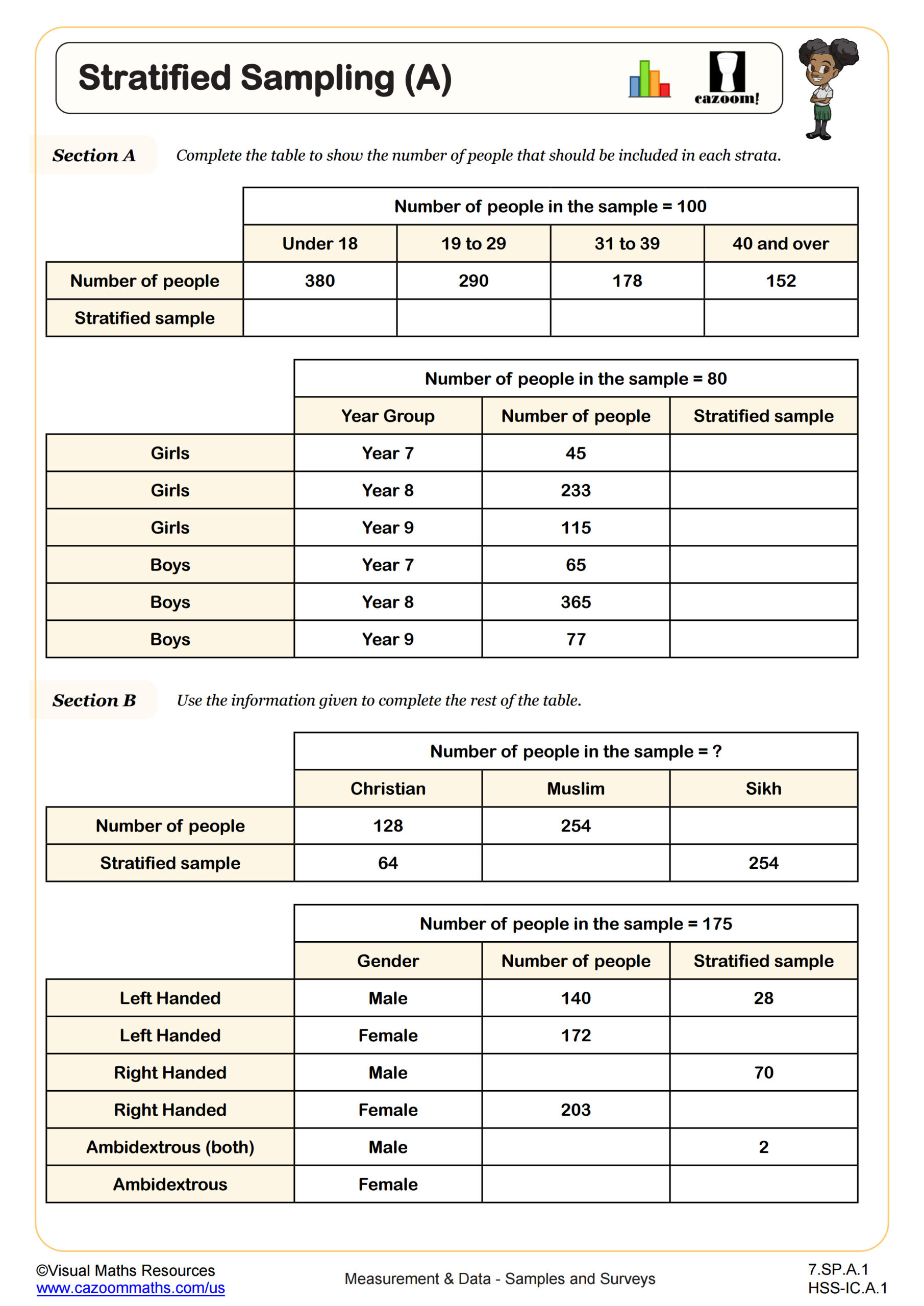
Stratified Sampling (B)
Grades: 7th Grade, Geometry
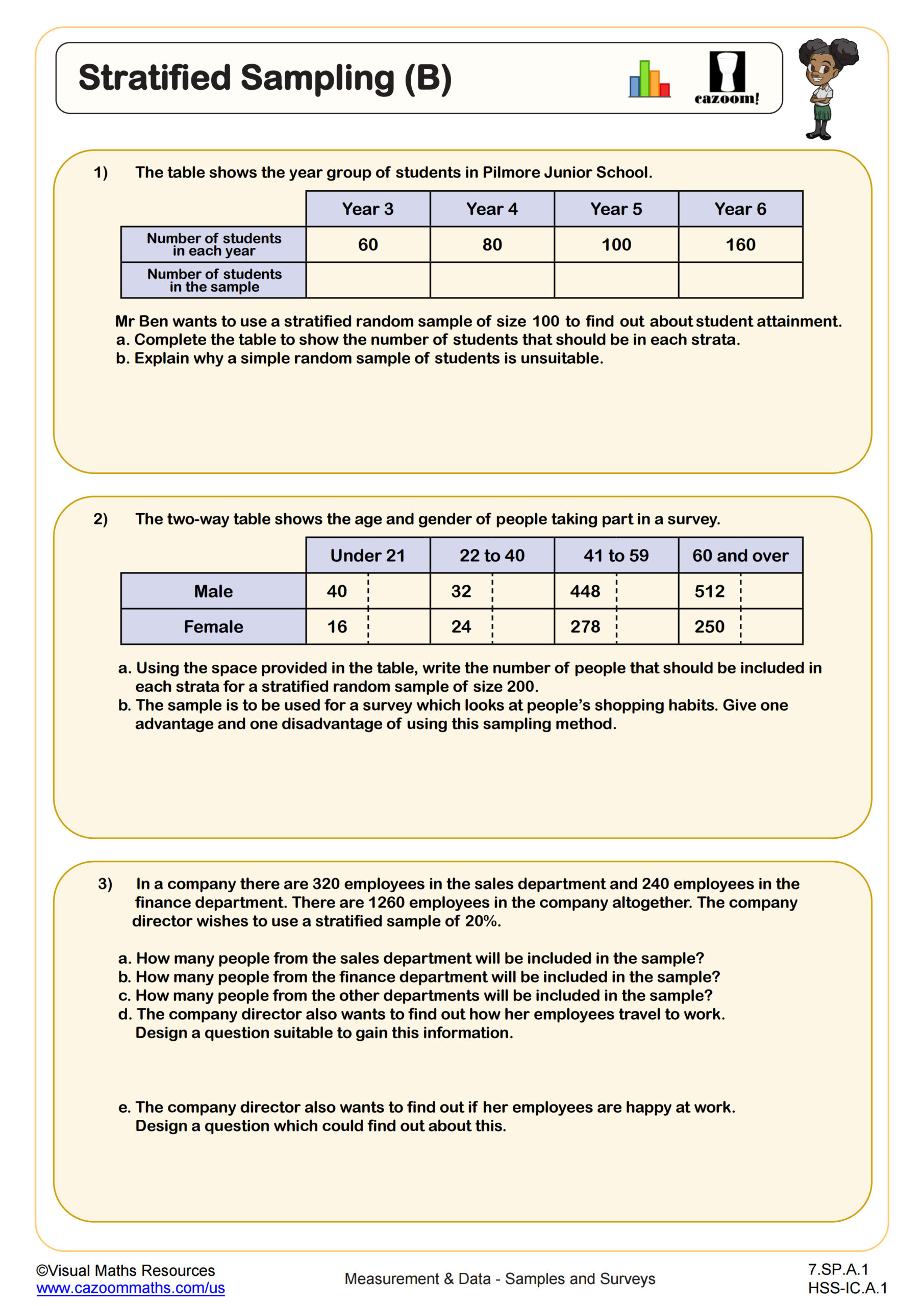
The Importance of Learning About Samples and Surveys
Businesses and researchers across all industries conduct surveys to collect data to help them answer a question or make informed decisions.
Any business which offers a product or a service to a customer might wish to know how they can improve, and to find this information they will invite their customers to complete a survey. Whenever someone needs to find out information, a survey will be useful.
Types of Samples and Surveys
There are many different things to consider when putting together a survey to make sure your results are unbiased and representative, so therefore it is important to learn about methods of sampling.
Different sampling methods will be suitable for different types of surveys, and learning about these methods through clearly presented worksheets will help students master the skill of discerning between sampling techniques; a skill which they will definitely need for the future.
Teaching Samples and Surveys
Surveys and sampling worksheets are designed not only to help students work out how to create a sample set and perform a survey but to analyze and understand the data gleaned from a survey.
This data might be displayed in several ways, for example, a graph, or as a percentage. Therefore, learning about surveys and sampling can help children improve their skills in many other areas of math.
What Are Samples and Surveys?
Surveys are used to learn about large groups or populations without needing to question or assess each member. Instead, representative samples are taken and inferences are drawn about the population as a whole.
Even the best samples and surveys can only produce tentative conclusions. A well-designed, properly conducted survey with enough unbiased samples, however, can be relied upon with a statistically justified level of confidence.
Why Are Samples and Surveys Important?
Here is why samples and surveys are important: Surveys allow researchers to conclude without needing to know about every member of a group. Samples provide the required data.
What are Quantitative and Qualitative Data?
Both quantitative and qualitative data are important. Quantitative data is information that can be conveyed in the form of numbers, or quantities. Qualitative data describes other, non-numeric qualities of the individuals or objects being studied.
A person's age, weight and current heart rate are all quantitative data points. A person's middle name, occupation and birthplace are all qualitative pieces of data.
What are the Five Basic Survey Sampling Methods?
The five basic survey sampling methods are:
Random sampling, where survey samples are taken from the population according to unpredictable selection criteria. Rolling a pair of dice or picking names out of a hat would allow for random survey sampling.
Systematic sampling, where samples are selected according to a set, unvarying pattern. Questioning every third member of a class or every fifth guest at a party would be a systematic sampling method.
Cluster sampling, where a population is first broken up into subgroups according to location or some other characteristic. Every member of some number of these clusters then gets sampled.
Stratified sampling, where characteristics of interest are used to define subgroups, which are called "strata." Each stratum will then be sampled several times corresponding to its size relative to the others, using a different survey sampling method.
Convenience sampling, where survey samples are taken as they become available until enough have been acquired. Analyzing the first 50 responses to a survey sent to every member of a group would be convenience-based sampling.
These five basic sampling methods can also be used in combination, and often are. There are four common ways to conduct random sampling. Several of which include elements of other sampling methods.
What are the Four Types of Random Sampling?
There are four distinct types of random sampling:
Simple random sampling, where samples are chosen by chance from a single list identifying all the members of a population.
Cluster random sampling, where the clusters to be sampled are selected randomly.
Stratified random sampling, where the members of each stratum to be sampled are chosen at random.
Systematic random sampling, where one or more of the parameters of the system to be used are randomly determined.
Which Sampling Method Should You Use?
Each general type of sampling has its own distinctive strengths and appropriate use cases. Random sampling is the most common and versatile. Systematic sampling often proves to be the simplest option. Convenience sampling can be beneficial where ease of use is more important than statistical significance.
Cluster sampling is most often employed when easily identifiable subgroups occur naturally within a population. Finally, stratified sampling can be used to make sure samples are taken from all subgroups of interest.
What is a 'Biased Sample'?
A biased sample is one where the sampling method used did not produce a representative picture of the group or population. Professor Victor Bello Accioly, for example, once said that "Friendship is a totally biased sample of the population: we only pick out the best ones." (1)
It might be convenient to survey all of a person's close friends, but that would probably produce a biased sample of the population of the town they all live in. Your survey could reveal that you were the favorite person of all those sampled, but that might not be representative of the town as a whole.
Test Your Understanding
Answer the following questions about sampling and surveys to test your understanding of the subject:
• Why would a researcher conduct a sampling survey instead of learning about every member of a population?
• Is a person's weight a qualitative or quantitative data point?
• Is a person's favorite flavor of ice cream qualitative or quantitative data?
• If a researcher flips a coin to determine the samples to take, which sampling method is being used?
• What type of sampling would it be if a survey were given to people whose first names were an odd number of letters long?
• If you survey the five people closest to you on a train, what sampling method are you using?
• Suppose a sampling survey breaks a city down into neighborhoods and then samples all of the residents of two of them. What sampling method was employed?
• A researcher divides a group of people into age-defined subgroups and then takes a number of samples from each proportional to its size. What type of sampling is that?
• Can you name three different ways to incorporate random sampling into other sampling methods?
• Why do researchers try to avoid taking biased samples?